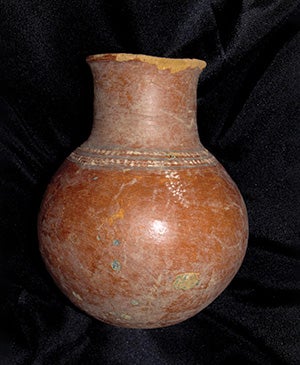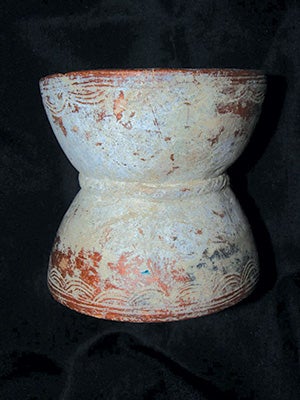Mali's Treasures Go Home
More than a decade ago, a Rice archaeologist helped identify illegally imported African antiquities at the Port of Houston; in 2021, they were repatriated at last.

In March 2009, Rice archaeologist and Herbert S. Autrey Professor of Anthropology Susan McIntosh stood inside a massive warehouse at the Port of Houston surrounded by hundreds of confiscated axe heads, funerary urns and other ancient artifacts from Africa.
The recent shipment from the West African country of Mali was tagged as modern replicas of cultural items. But as U.S. Customs officials examined the items, they grew suspicious. Agents who had just taken specialized training to recognize protected African antiquities cracked open the 8-by-8-foot crates destined for an art gallery in the Southwestern U.S. As they unwrapped hundreds of items, they found many that looked genuinely old — not like recent reproductions. They called in McIntosh, an expert in ancient West African societies living along the Niger and Senegal rivers.
McIntosh has done archaeological fieldwork in Ghana, Senegal and Mali, and she’s currently a member of the Center for African and African American Studies at Rice. In 1996, a time of rampant looting of artifacts from Malian archaeological sites, President Bill Clinton appointed her to the Presidential Advisory Committee on Cultural Property. The committee was charged with reviewing countries’ requests under the 1970 UNESCO Convention to have the U.S. protect their archaeological heritage by intercepting illegal items arriving here.
In ancient Mali, histories often were passed down orally instead of in writing. “But the deep past isn’t always preserved in oral history,” McIntosh says, “so archaeology becomes a prime way for African nations to reconstruct a past that’s been interrupted and disrupted by colonialism.” Any loss of the archaeology, therefore, is a major concern.
When McIntosh arrived at the warehouse with her Malian graduate student, she spent hours handling and photographing pottery, including a bird-headed terra cotta statuette and funerary urns. She dug into burlap sacks stuffed with Neolithic and Paleolithic artifacts — arrow points dating from 8,000 to 1,000 B.C. and stone axes created tens to hundreds of thousands of years ago.
“The scale of it was amazing,” she says. “I was blown away.”

McIntosh scooped residue from a 2-foot-tall funerary urn with a spoon and found bone flakes. It was a blatant sign the items were not, in fact, reproductions. McIntosh bagged the evidence and wrote a report for the government, which ended up seizing the illegally imported goods.

cup vessel. Photo courtesy of Homeland Security Investigations Houston Cultural Property Investigations
In 2011 and 2012, the U.S. government returned a handful of the artifacts to Mali. But then, civil war broke out in the country followed by ongoing instability, most recently with a military coup that ousted Mali’s civilian leaders, delaying the return of the remaining artifacts. McIntosh moved on with her research.
Then, late last year, she heard the news: The U.S. finally sent the remaining artifacts home. The shipment included six large funerary urns and 913 stone points and axes. The artifacts will eventually go on display in Mali’s museums.
“People have to be aware and responsible when they buy or collect antiquities,” McIntosh says. “It was very exciting to hear that these items eventually all went back to Mali.”
— Deborah Lynn Blumberg
